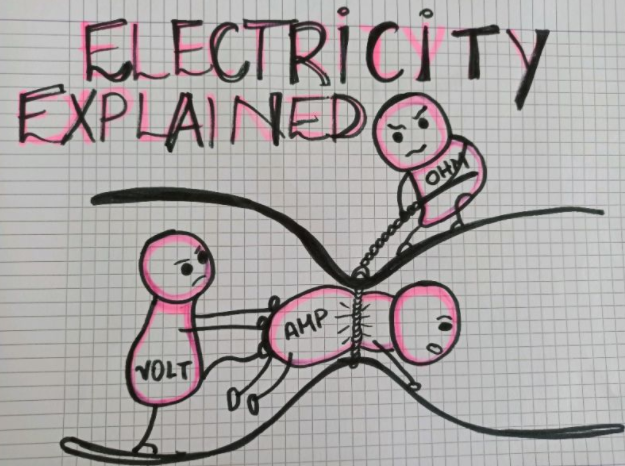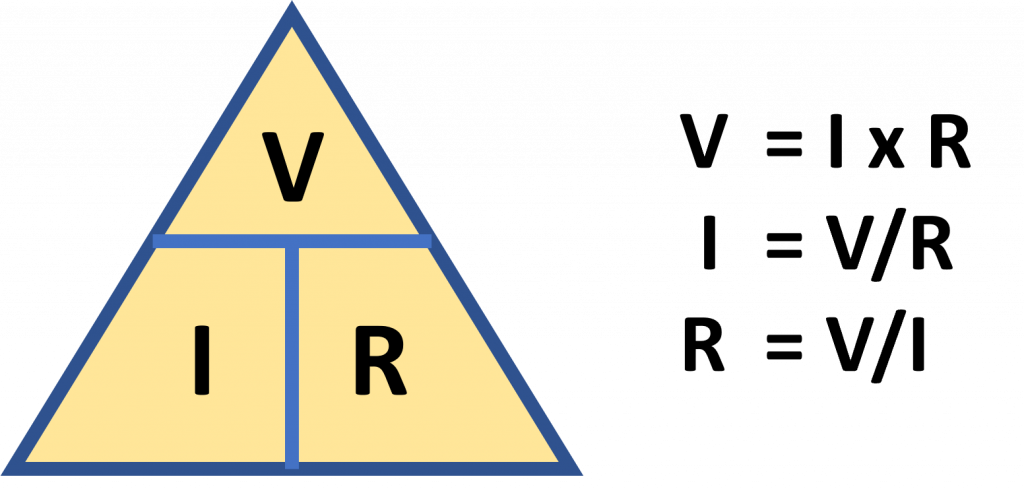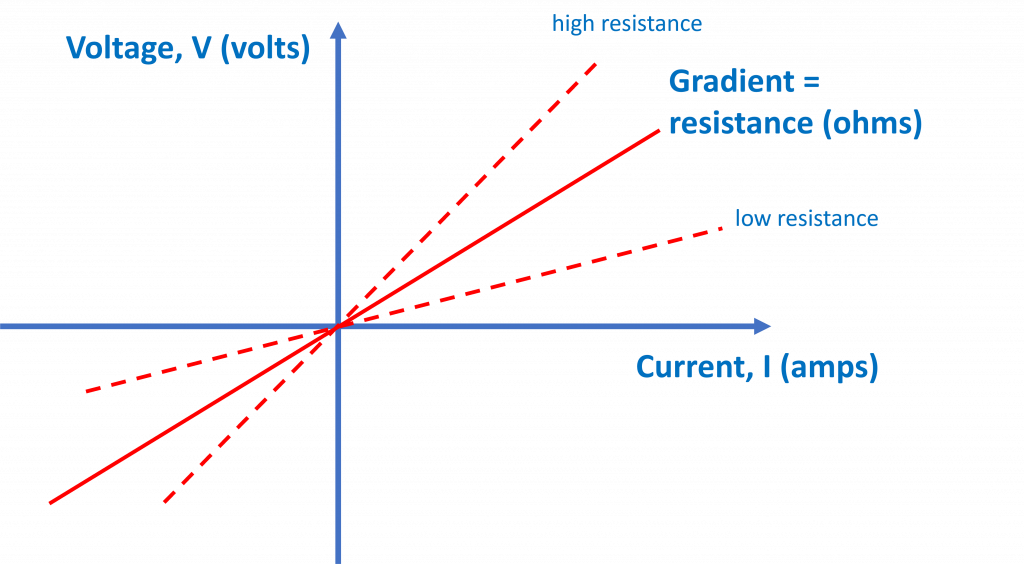Electricity explained
Electricity is somehow difficult to explain, but this picture, source unknown, was posted on LinkedIn recently and is pretty good.

The volt is the unit for electric potential, electric potential difference (voltage), and electromotive force (emf), named after the Italian physicist Alessandro Volta (1745–1827).
The amp, short for ampere, is the unit of electric current, named after André-Marie Ampère (1775–1836), French mathematician and physicist.
The ohm (symbol Ω) is the unit of electrical resistance, named after German physicist Georg Simon Ohm (1787-1854).
The relationship between all three for some substances is V = I x R where V is the voltage, I the current (in amps) and R, the resistance in ohms. Materials which follow this rule are called ohmic substances, examples are copper and aluminium.

If you plot a graph of V versus I, then for ohmic substances you will get a straight line, or to say in another way, a linear relationship between V and I.

